Exploring the Intricacies of Bitcoin Transactions
Written on
Chapter 1: Understanding Bitcoin Transactions
To grasp the concept of Bitcoin, it is essential to understand its transactions.
A Bitcoin transaction serves as the mechanism for transferring ownership of Bitcoin value. Essentially, it documents the amount of Bitcoin that is moved from one address to another (or to multiple addresses). In this context, Bitcoin exists as a series of transaction records.
Structurally, a transaction consists of inputs and outputs. An input refers to an address that holds a non-zero amount of Bitcoin from which the coins will be sent. Conversely, an output is an address that will receive the Bitcoin. Notably, all inputs belong to the same owner, while outputs may be distributed among different owners.
This structure can be likened to a double-entry bookkeeping system, where the left side represents the current owner's Bitcoin balance and the right side indicates the new owners.

Photo by Austin Distel on Unsplash.
Implicit in each transaction is the fee awarded to the miner who confirms it. While a Bitcoin transaction shares similarities with conventional fiat transactions, it encompasses much more detail. Besides the addresses, a typical transaction includes information such as:
- Size in bytes
- Block number associated with the transaction
- Timestamp of when it was received by the network
- Number of confirmations
- Fee per byte
Most of this data pertains to either the current transaction or the block it belongs to. However, what ties together all Bitcoin transactions across the network are the inputs and outputs; the input of one transaction becomes the output of a preceding one, forming a transaction chain. This chain effectively serves as proof of Bitcoin's existence.
What Does a Transaction Chain Look Like?
Consider Don, a baker from America, who wishes to enter the Bitcoin realm. He approaches his affluent neighbor, Vlad, seeking assistance in acquiring Bitcoin. Vlad proposes a deal: Don pays him $5,500 in exchange for 0.1 BTC.
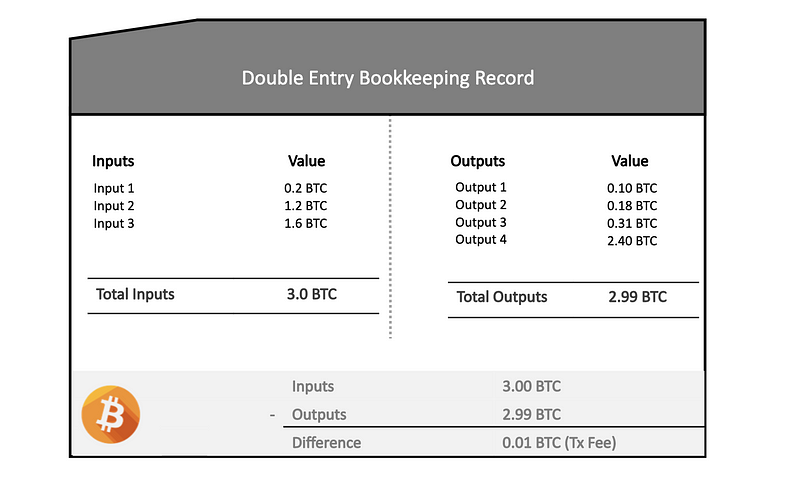
After receiving his BTC, Don visits his friend Salman, who recently began accepting Bitcoin for gas purchases. He buys $1,000 worth of gas for 0.02 BTC. Later, Salman hosts a party and needs vegetables, so he pays Mukesh $500 for them with 0.005 BTC.
The transaction chain from these exchanges can be illustrated as follows:
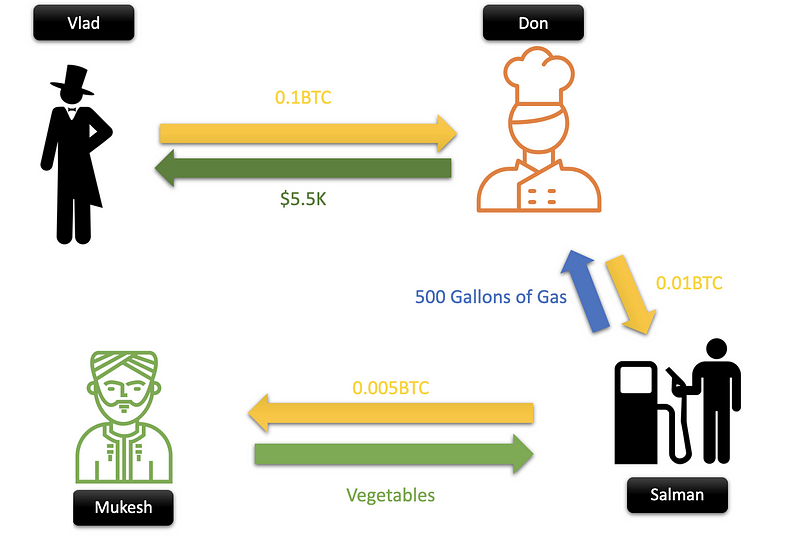
New aspects of a transaction emerge in this chain, including:
- Change
- Spent/Unspent Outputs
- Transaction Hash
While the transaction hash will be discussed in a future article, let's delve into the first two concepts.
Change in Transactions
An interesting feature of transaction inputs is that, like currency notes, they cannot be further divided. Therefore, unless all inputs are consumed in a transaction, change must be returned.
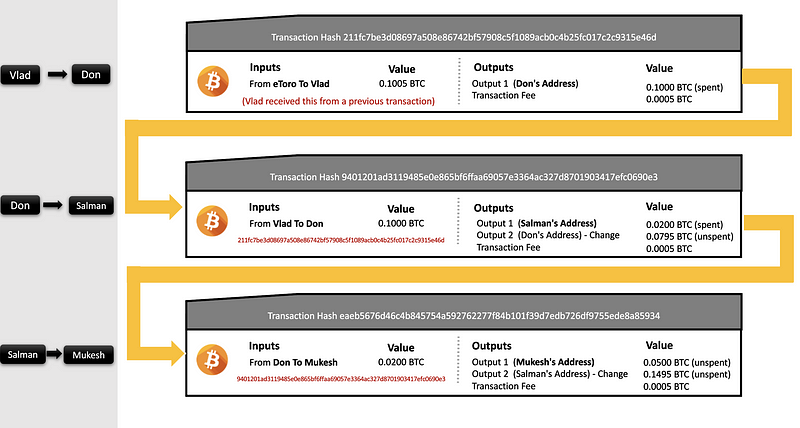
Notably, in the output sections of the second and third transactions, there is an output labeled 'change.' Philosophically, this is akin to receiving change when paying with a large bill for a smaller purchase. However, the change is treated as a separate output, necessitating an output address—known as the change address.
For security reasons, the change address should differ from the input address. Many wallets ensure that change is directed to a distinct address.
Challenges with Change
Individuals who frequently engage in transactions often accumulate a lot of change, resulting in multiple addresses with small Bitcoin amounts. As handling loose change in a physical wallet can be cumbersome, Bitcoin wallets utilize a method known as Input Aggregation to address this issue.
Aggregating Inputs
Wallets employ various strategies to aggregate inputs, including:
- Combining many small inputs into a single output.

- Using two large inputs that total less than the required output.
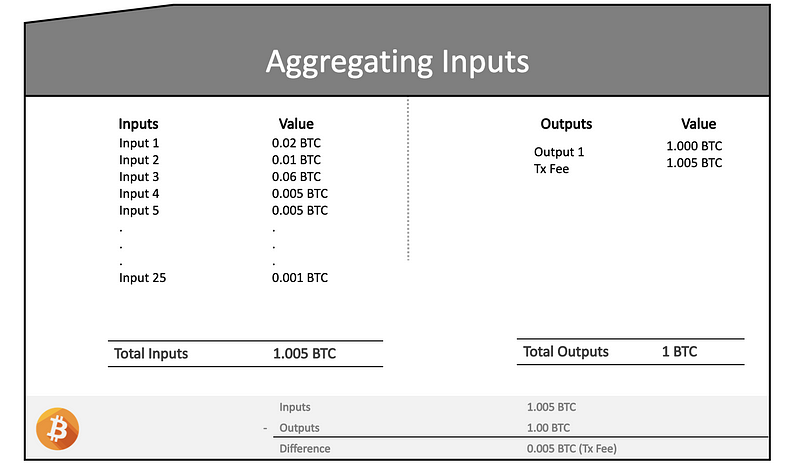
- Mixing one large input with various small inputs.
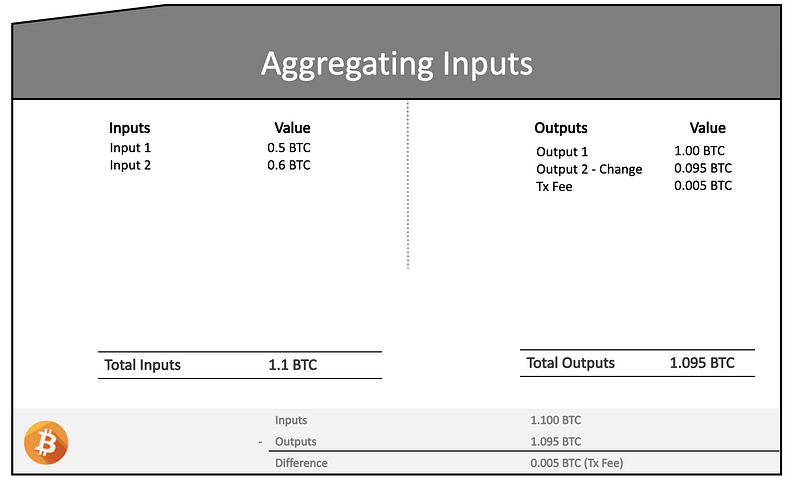
These methods aim to replicate the optimizations that humans have historically made with their physical change.
Spent vs. Unspent Outputs
Another vital aspect of transaction chains is whether an output is spent or unspent. Spent outputs indicate that a legitimate transaction has occurred downstream, utilizing that output.
The keywords "spent" and "unspent" signify whether further transactions exist after the current one. Essentially, any transaction with all outputs marked as unspent signifies the end of that transaction chain.
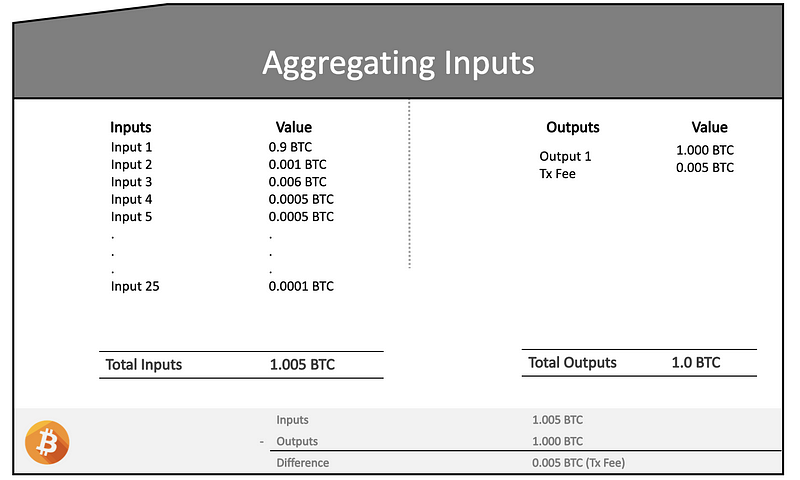
Different Types of Transactions
Common transactions can be categorized as follows:

- Aggregating Transaction: This occurs when many small inputs are combined into a single output.
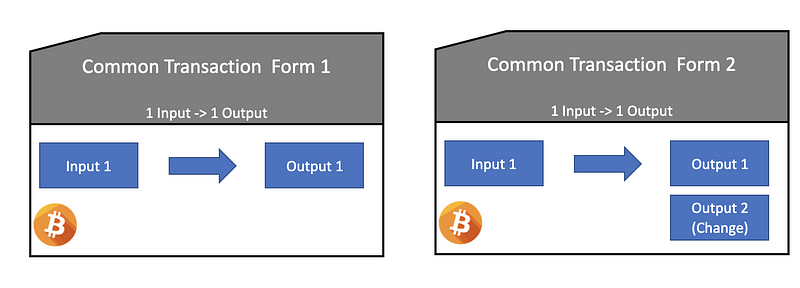
- Distributing Transaction: This occurs when one input is sent to multiple outputs, such as when a company pays salaries from a single account.
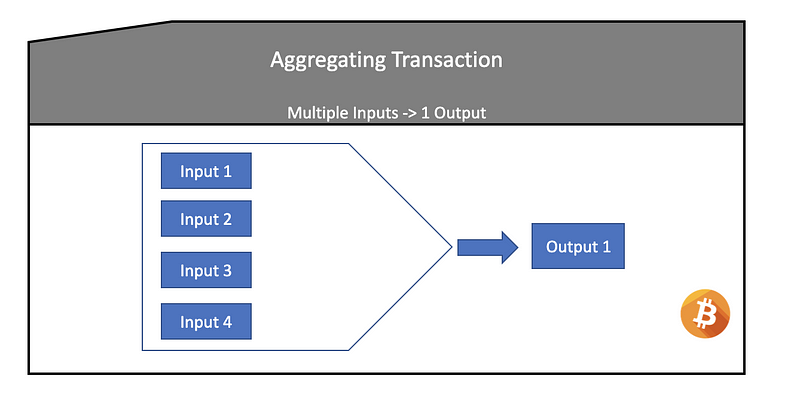
Viewing Transactions
Transactions can be analyzed using blockchain explorers, which are web applications that function as search engines for the Bitcoin network. For instance, I utilized Blockchain.com to examine a real-world transaction, where the following image details the hash, inputs, outputs, and fees associated with the transaction.
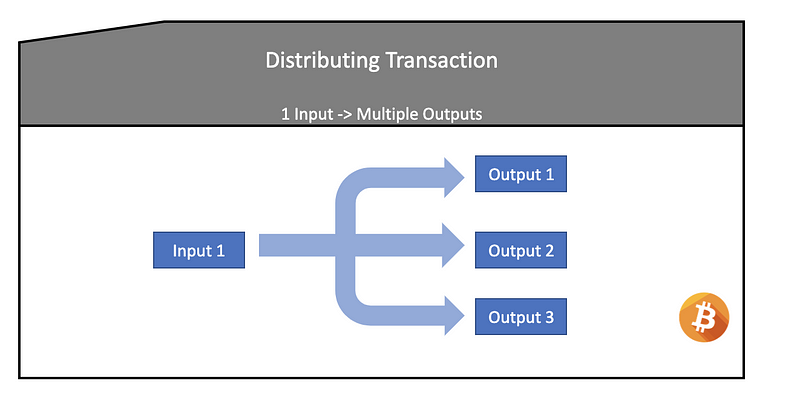
To further illustrate, here are the input and output details of the transaction:

For comparison, the same transaction can also be viewed on another blockchain explorer.
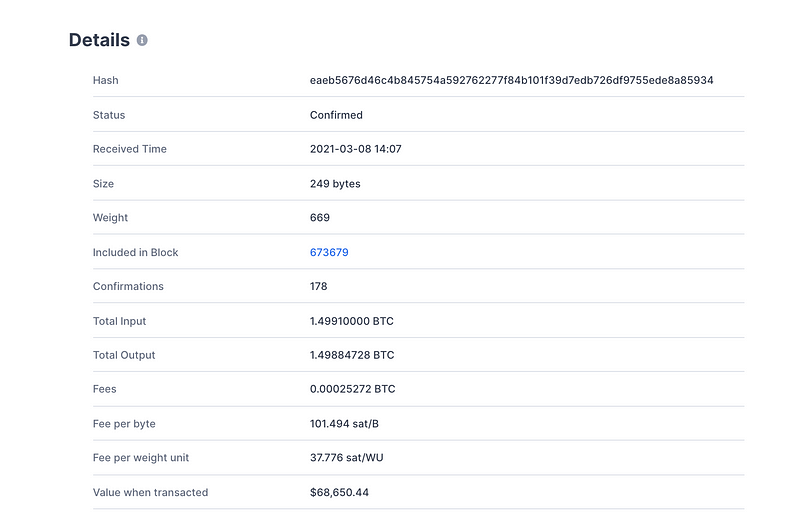
Additionally, a fun way to visualize transactions is through the website txstreet.com, which depicts blocks as buses and transactions as passengers.
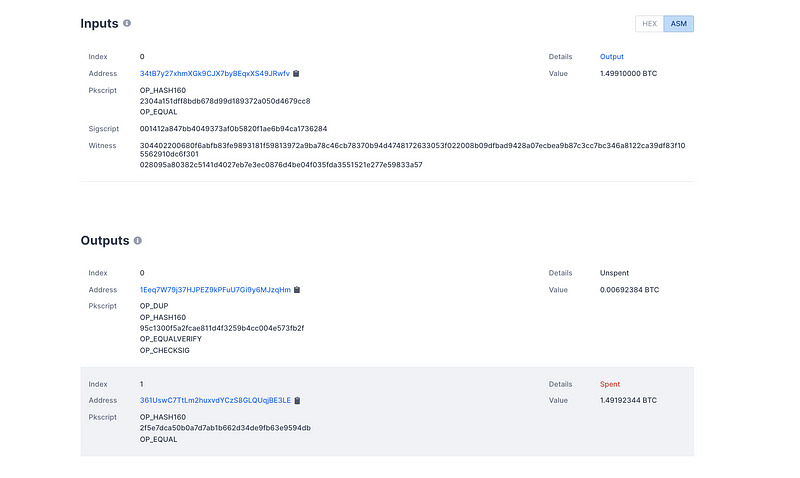
The first video, "How to Find Hidden Messages in Bitcoin Blockchain," delves into uncovering the underlying messages within Bitcoin transactions, enriching your understanding of the blockchain's complexities.
The second video, "What Happens To Unconfirmed Bitcoin Transactions And How To Fix Them," explains the intricacies of unconfirmed transactions and offers solutions for addressing them.
Conclusion
Having explored the structure of a Bitcoin transaction, the next logical step is to learn about constructing a transaction and how it is added to the blockchain. We will address these topics in the following article. In the meantime, feel free to explore a transaction using one of the blockchain explorers and trace the transaction chain.